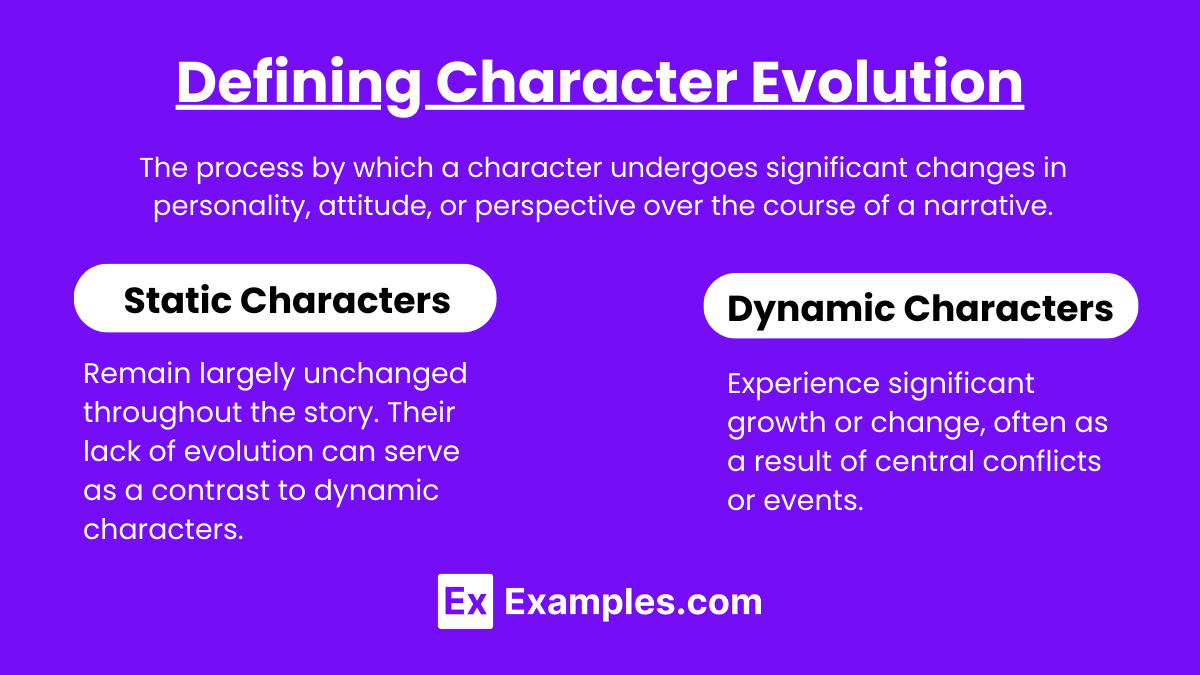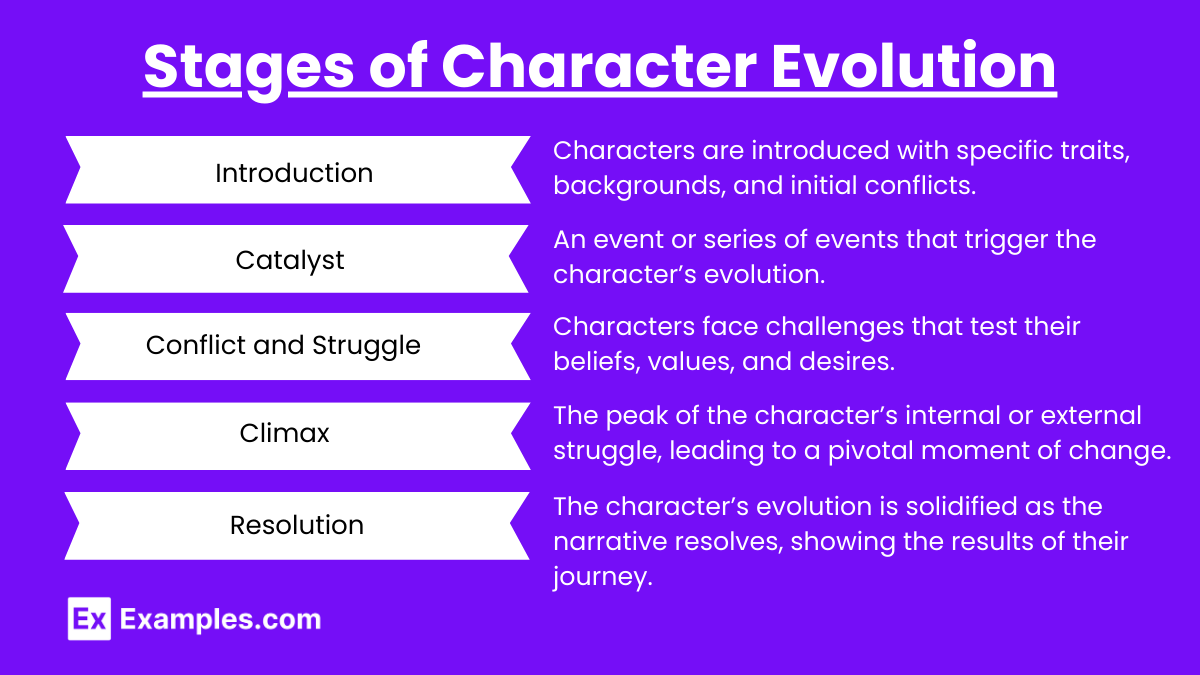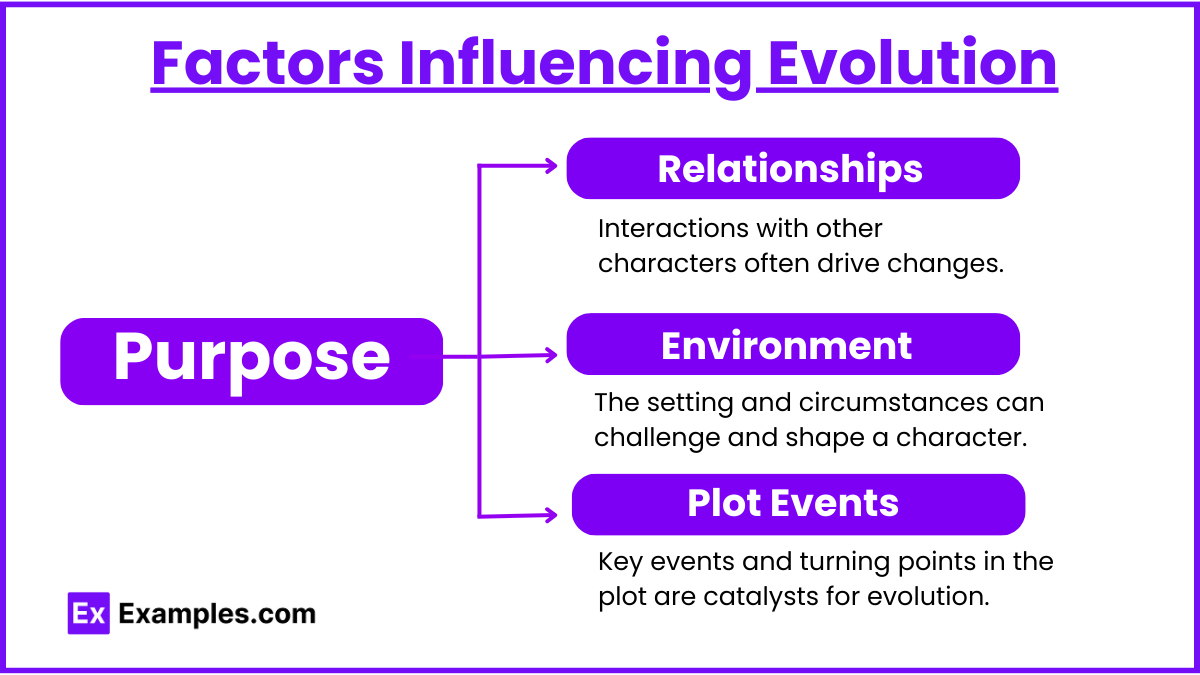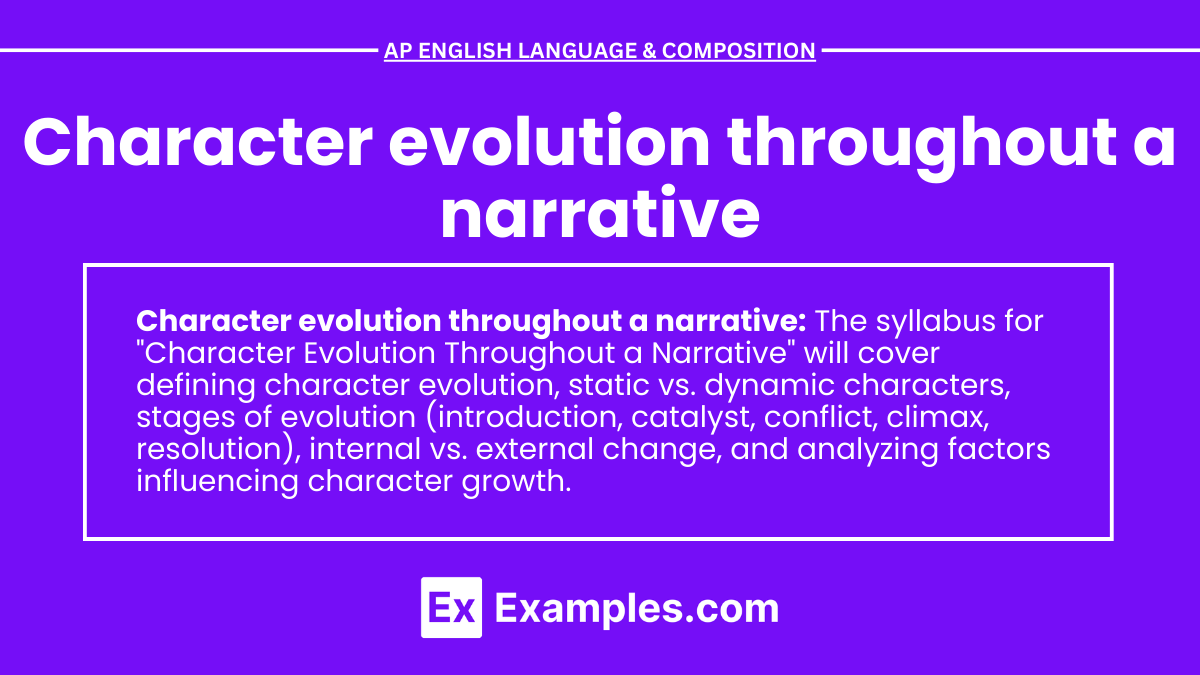In AP English Language and Composition, understanding character evolution is crucial for analyzing literary texts deeply. Character evolution refers to the significant changes characters undergo throughout a narrative, revealing key themes and conflicts. This skill enhances academic essay writing and argumentative speeches by allowing students to craft insightful analyses. By examining how authors use rhetorical sentences to depict characters’ transformations, students can uncover the underlying motivations and developments that drive a story. Mastering this concept is essential for success in AP English Language and Literature, as it allows for a comprehensive interpretation of character dynamics.
Learning Objectives
By the end of this lesson on character evolution throughout a narrative, students will be able to develop a final thesis statement that clearly articulates the significance of a character’s transformation. They will enhance their critical thinking skills by analyzing rhetorical sentences that depict character changes. Students will practice writing rhetorical essays, persuasive essays, expository essays, and explanatory essays, using cumulative sentences to build and support their analyses effectively in one coherent paragraph.
Defining Character Evolution

Character Evolution: The process by which a character undergoes significant changes in personality, attitude, or perspective over the course of a narrative.
Static vs. Dynamic Characters:
- Static Characters: Remain largely unchanged throughout the story. Their lack of evolution can serve as a contrast to dynamic characters.
- Example: In “The Great Gatsby,” Tom Buchanan remains largely unchanged, symbolizing the entrenched values of the old aristocracy.
- Dynamic Characters: Experience significant growth or change, often as a result of central conflicts or events.
- Example: In “To Kill a Mockingbird,” Scout Finch evolves from innocence to a deeper understanding of morality and human complexity.
Stages of Character Evolution

Introduction:
- Characters are introduced with specific traits, backgrounds, and initial conflicts.
- Example: At the beginning of “Pride and Prejudice,” Elizabeth Bennet is portrayed as witty and independent, yet prejudiced against Mr. Darcy.
Catalyst:
- An event or series of events that trigger the character’s evolution.
- Example: In “The Catcher in the Rye,” Holden Caulfield’s interactions and experiences in New York serve as catalysts for his growing disillusionment.
Conflict and Struggle:
- Characters face challenges that test their beliefs, values, and desires.
- Example: In “The Lord of the Rings,” Frodo Baggins struggles with the burden of the One Ring, which tests his courage and resilience.
Climax:
- The peak of the character’s internal or external struggle, leading to a pivotal moment of change.
- Example: In “Jane Eyre,” Jane’s moral and emotional climax occurs when she chooses to leave Mr. Rochester, asserting her independence and self-respect.
Resolution:
- The character’s evolution is solidified as the narrative resolves, showing the results of their journey.
- Example: By the end of “The Great Gatsby,” Nick Carraway’s perspective on wealth and morality is transformed by his experiences with Gatsby and the Buchanans.
Analyzing Character Evolution
Internal vs. External Change:
- Internal Change: Refers to shifts in a character’s beliefs, values, or emotional state.
- Example: In “A Christmas Carol,” Ebenezer Scrooge undergoes a profound internal change, evolving from miserly to generous.
- External Change: Refers to changes in a character’s circumstances or social status.
- Example: In “Great Expectations,” Pip’s social status changes dramatically, affecting his interactions and self-perception.
Factors Influencing Evolution

- Relationships: Interactions with other characters often drive changes.
- Example: In “Pride and Prejudice,” Elizabeth Bennet’s relationship with Mr. Darcy evolves, leading to personal growth for both characters.
- Environment: The setting and circumstances can challenge and shape a character.
- Example: In “The Grapes of Wrath,” the harsh realities of the Dust Bowl and the Great Depression drive the Joad family’s evolution.
- Plot Events: Key events and turning points in the plot are catalysts for evolution.
- Example: In “Harry Potter,” Harry’s experiences at Hogwarts and his battles against Voldemort shape his character growth.
Case Studies of Character Evolution
Case Study 1: “The Great Gatsby” by F. Scott Fitzgerald
- Character: Nick Carraway
- Evolution: Initially, Nick is naive and idealistic, but through his experiences with Gatsby and the East Egg elite, he becomes disillusioned with the American Dream.
- Analysis: Nick’s evolution is highlighted by his changing perspective on wealth and morality, underscored by Fitzgerald’s use of imagery and symbolism.
Case Study 2: “To Kill a Mockingbird” by Harper Lee
- Character: Scout Finch
- Evolution: Scout evolves from a naive child to a more mature individual who understands the complexities of human nature and justice.
- Analysis: Her growth is driven by her father’s teachings, her interactions with Boo Radley, and the events of Tom Robinson’s trial.


